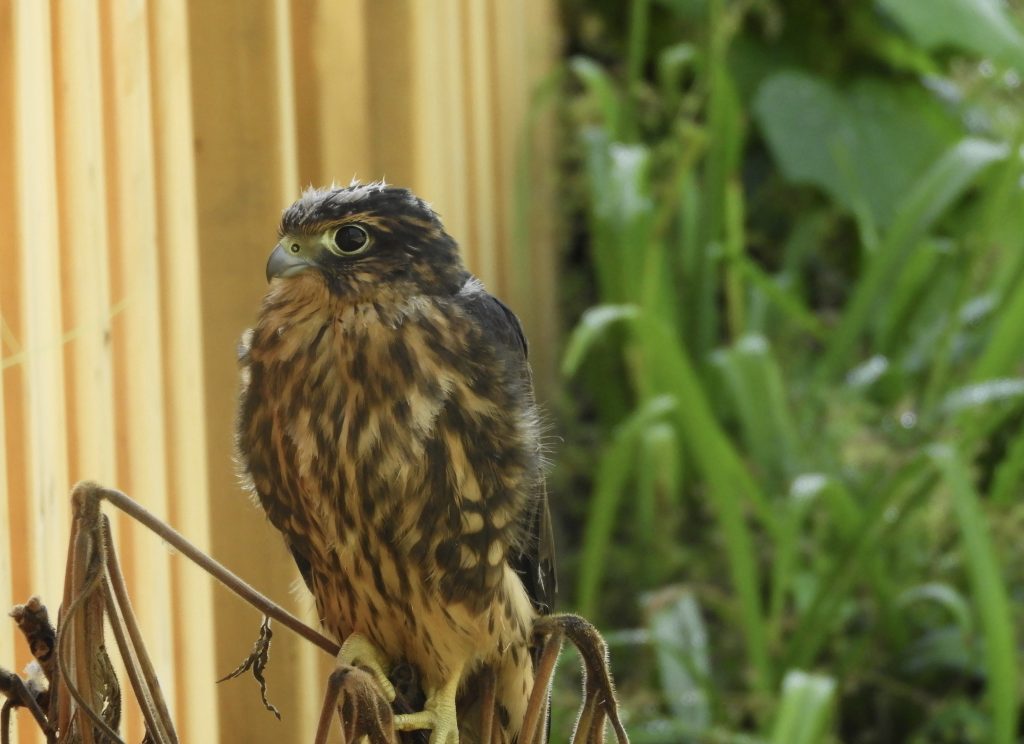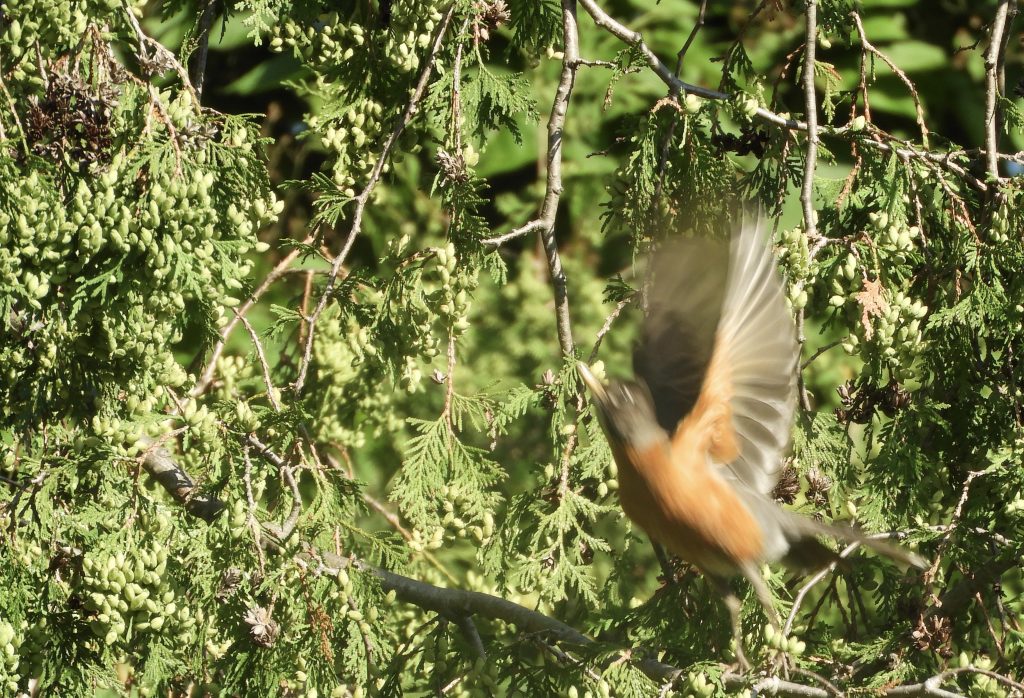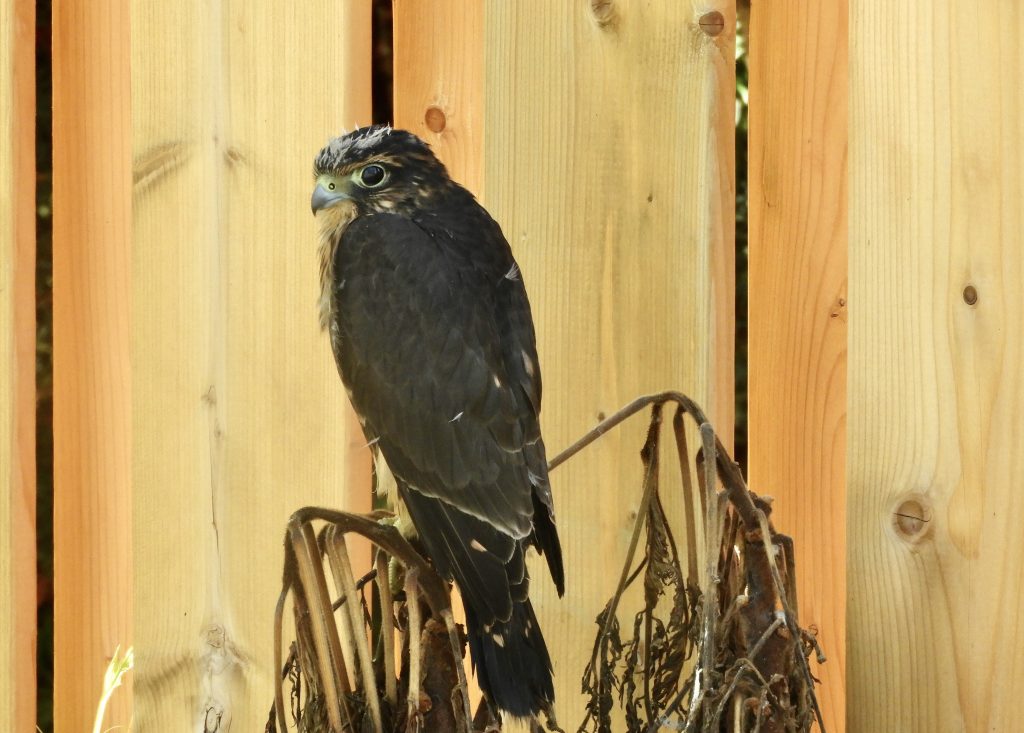
Burlington. ON. July 10, 2023. Three months ago, I covered the story of a pair of Merlins who had appropriated a crow’s nest in our front yard, apparently with the intention of setting up home.
Well, they did everything you might expect of nesting birds (Except build the nest. Thanks crows). They secured the neighbourhood with lots of chittering fly-pasts, stood atop nearby trees, copulated frequently, visited the nest and in due course fledged young. The nest was too high and too well hidden for anyone to be sure of what was going on inside, but they’ve been active neighbourhood residents and it was nobody’s business anyway. Two days ago, I was just able to discern a wing-flapping fledgling at the edge of the nest. Just one I think; so much for all that copulation.
Today was flight day and we met this youngster at very close quarters. Cornell Lab’s excellent reference Birds of the World notes that Merlins fledge (leave the nest) at about 29 days after hatching and remain dependent upon adults, they remain near their nest sites for 1 to 4 weeks. Both adults feed the young during this period, males more than females and significantly their first flights are clumsy and sometimes fledglings land on ground or water. Well ‘ours’ certainly fits that description. It was seen by a neighbour wading through a puddle of rainwater and having some difficulty making its way up to somewhere higher, safer and where it would be less likely to fall victim to a roaming cat (Domestic cats are reckoned to kill 1.3–4 billion birds every year (Cornell Labs)).
The parent Merlins are not far away, we can see them and hear them chittering instructions. American Robins are incensed by its presence and burn up a lot of energy clucking and making low passes.

The parent birds have three months invested in this still slightly fluffy youngster, and we have our fingers crossed; there’s little else we can do. My Bird of the Day of course.